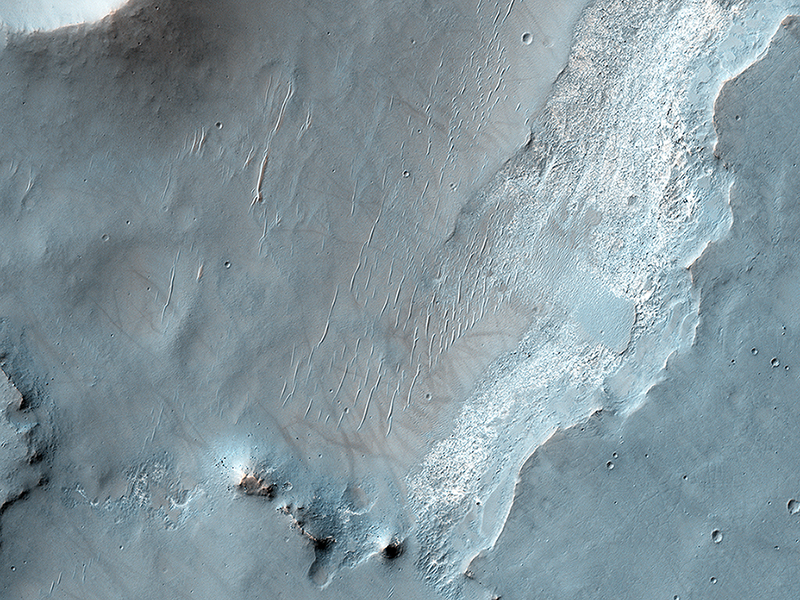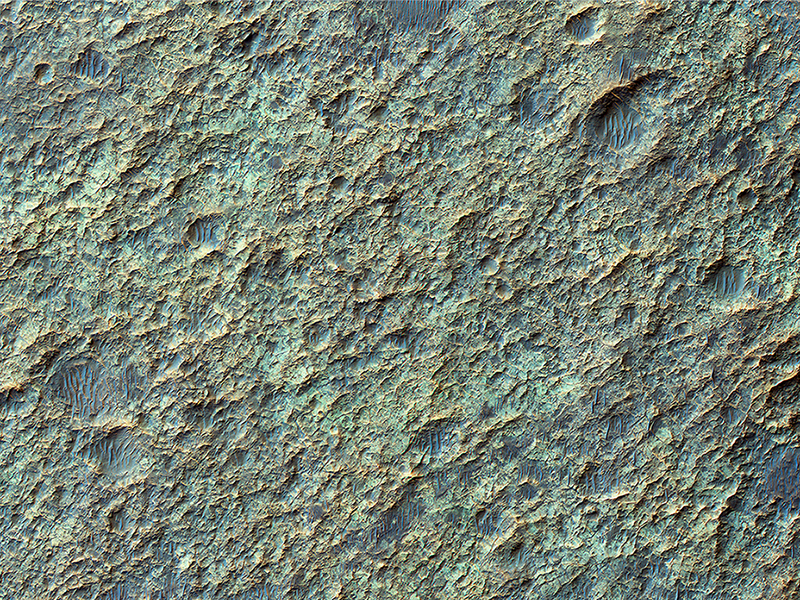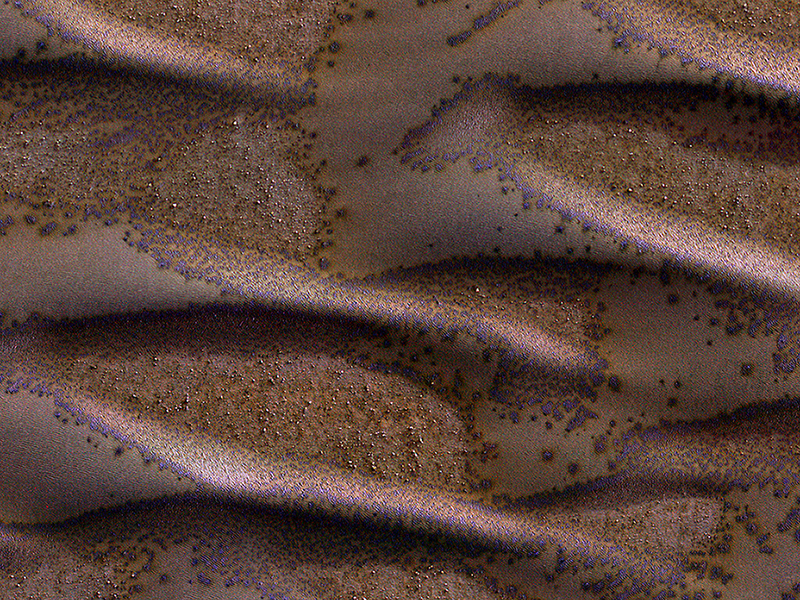Christy Caudill, Livio Tornabene, Ian Pritchard, Eric Pilles wrote:Bedrock Exposures on the Floor of Bakhuysen Crater (ESP_044981_1560) (HiClip)
This HiRISE image shows an exposure of bedrock on the floor of Bakhuysen Crater, a 150-kilometer diameter impact crater in Noachis Terra. The bedrock is highly fragmented and fractured. The distinct false-color in the image may indicate that the tan-colored, fractured bedrock may have been altered in the presence of water.
The location of this bedrock and context of its surroundings give us significant clues to the possible water-involved origin of these materials. Numerous channels are carved into the rim of the crater. At this particular location, one such channel has deposited a smooth-textured, fan-like deposit onto the crater floor. The bedrock is now exposed at the edge of this fan-like deposit, which overlies a heavily pitted surface to the north.
The pitted surface likely represents an older impact-related deposit, possibly containing melt and rock fragments produced during the crater’s formation. If the fan formed soon after, while these deposits were still hot, the heat and any available fluids may have altered materials and were quickly transported and deposited within the crater.
This interpretation of the origin of these deposits may be further tested through data returned by HiRISE’s sister instrument, CRISM , a spectrometer also aboard MRO.
Ian Pritchard, Livio Tornabene, Eric Pilles, Christy Caudill wrote:On the Shape of Impact Craters (ESP_044998_1745) (HiClip)
The shape of a crater can depend on factors including the angle of impact and the pre-impact slope and topography.
This image shows a roughly 3-kilometer impact crater, formed on the sloping walls of Tithonium Chasma, part of the large Valles Marineris canyon system. We can see that this crater is non-circular, measuring about 3 by 4 kilometers. The ejecta—the debris that is generated and thrown out by an impact—will typically distribute itself evenly around the outside of the crater rim where the pre-impact surface is flat and the angle of impact is not too low. However, due to the highly inclined nature of the surface here, the ejecta deposited preferentially downslope, forming a tongue-like deposit.
Additionally, when examining the area around the crater, we see smooth, dark-toned flow-like features superimposed on the ejecta blanket and flowing downslope. These are believed to be composed of impact melt—or the mixture of rock and other material that melted upon impact—and flowed down the slope before hardening. These potential impact melt deposits also occur as smooth ponds, which pooled on the surface of a portion of the ejecta that did not escape the crater interior.
Alfred McEwen wrote:Valley Networks in the Ancient Martian Highlands (ESP_045299_1545) (HiClip)
The valley networks on Mars are terrains eroded by flowing water billions of years ago.
In places where the bedrock is well exposed, we often see a variety of colors due to altered minerals and polygonal patterns perhaps due to wet, clay-rich deposits.
Alfred McEwen wrote:Frosted Dunes (ESP_045311_1205) (HiClip)
Sand dunes cover much of this terrain, which has large boulders lying on flat areas between the dunes.
It is now late winter here in the Southern hemisphere, and these dunes are just getting enough sunlight to start defrosting their seasonal cover of carbon dioxide. Spots form where pressurized carbon dioxide gas escapes to the surface.
This is part of a stereo pair, so be sure to look at the stereo anaglyph.
This is a stereo pair with ESP_045245_1205.
Credit: NASA/JPL-Caltech/University of Arizona
<< Previous HiRISE Update



